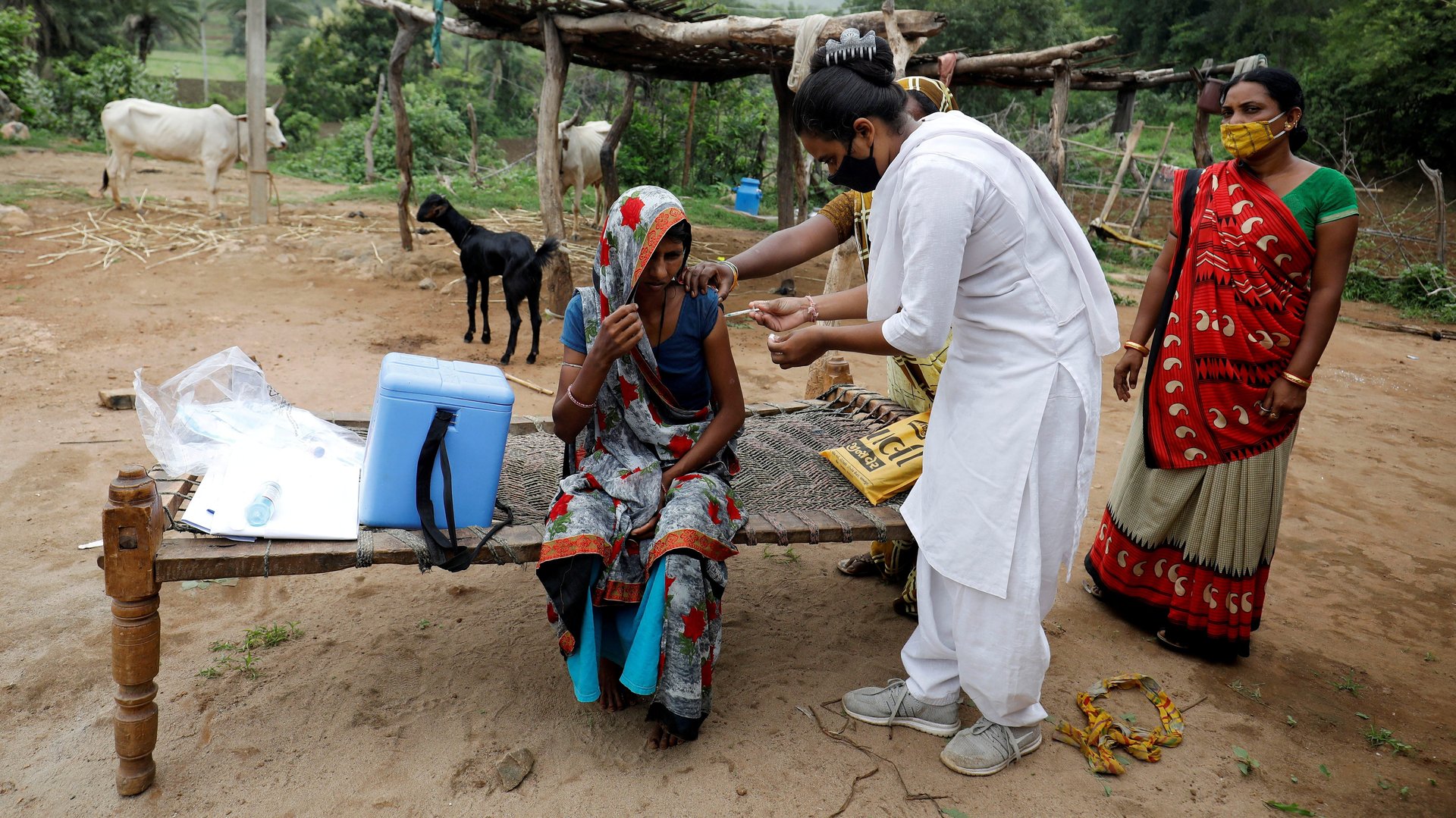Covid-19 vaccinations have finally picked up in rural India
India seems to be making some significant headway in its Covid-19 vaccination program. And most of this uptick has been in its rural districts.


India seems to be making some significant headway in its Covid-19 vaccination program. And most of this uptick has been in its rural districts.
In most states, vaccinations in rural districts are now outpacing those in urban areas, data from Cowin—the Indian government’s vaccination dashboard—show. This is a change from the May to July period, when rural vaccinations were trailing urban rates. In June, a Hindustan Times analysis showed that a someone living in urban India was nearly twice as likely to get a Covid-19 vaccine shot as people living in villages and semi-urban towns. This was alarming given that the 2011 census estimated that 60 to 70% of the country’s population lives in villages.
In August, India overcame some of its extreme vaccine shortages and was able to take its daily vaccinations rate to over 10 million, four times. On Sept. 17 alone, India administered 25 million doses to coincide with prime minister Narendra Modi’s 71st birthday. A large chunk of these vaccines were given out in rural districts. Since August, the rural share of daily vaccinations has gone up to 70% from only 50% in May.
Yet, this increase in share is not even across Indian states. Areas with more rural populations are either not consistently vaccinating rural residents, or are doing so at a rate that just about matched its population divide. For states to overcome the urban-rural divide from the months of May and June, they would need to send far more vaccines to villages.
Rising rural vaccinations in India
If manufacturers are able to sustain the vaccine supply levels of August, states would then need to focus on distributing these vaccines equitably.
In Uttar Pradesh, for instance, vaccinations in rural districts drop significantly on the weekend compared to urban areas. In eastern states of Bihar and Assam, rural vaccinations are happening proportionally to the rural population.
Gujarat has been marginally better at vaccinating its rural residents according the data. This is particularly significant because scientists expect a possible third wave to impact previously untouched parts of the country, especially in the hinterland. During the second wave, villages in India were caught unawares, with severe underreporting of both cases and Covid-19 deaths.
Kerala, appears to be vaccinating in rural districts significantly above its population average. The state currently has the majority of all new Covid-19 cases in India, and has been in the grips of a prolonged infection wave.
Improved vaccine supply
The expanding vaccine coverage, has meant fewer people are reporting problems with finding somewhere to get vaccinated. In an Aug. 24 survey by LocalCircles, 39% of respondents said they couldn’t find a dose. That’s down from 70% when the community-led social media platform in May. The Indian government has repeatedly denied the existence of vaccine shortages, even at a time when people could either not find slots or were turned away despite appointments.
Another key change boosting rural vaccinations is the government allowing anyone over the age of 18 to walk into a vaccination centre into a government vaccination centre and get vaccinated. Before May 24, the walk-in slots were reserved for those older than 45. Everyone else needed to register themselves using the Cowin platform or Aarogya Setu, the government’s contract tracing app.
Registering for a shot was a significant hurdle for non-metropolitan residents. Many are first-time internet users who would have needed assistance to navigate signing up online.
First cities, now villages
The growing amount of rural vaccinations could also be because of the sizable vaccine coverage in India’s metropolitan cities. When the Covid-19 vaccinations were opened up for all adults in May, people in cities scrambled—from Telegram groups to driving down to their nearest rural centre—to get vaccinated.
But now, in the southern city of Bengaluru, for instance, nearly 90% of the eligible population has received at least one vaccine dose. Cities like New Delhi and Mumbai have also reported similar coverage.